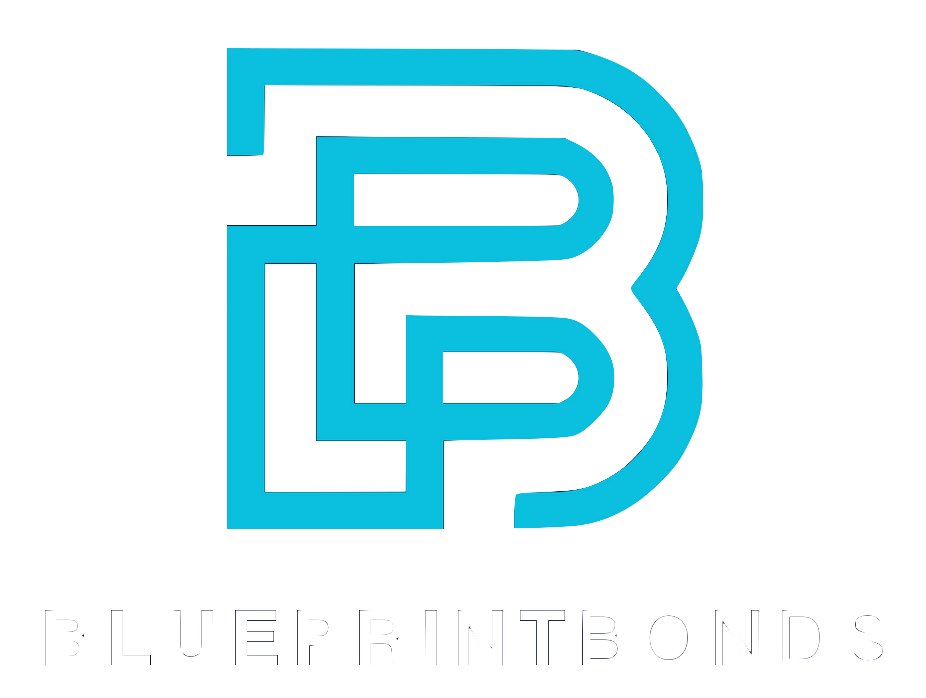Renewing a bond is a critical financial decision that requires a thorough understanding of the associated risks and opportunities. Whether you are managing municipal or corporate bonds, conducting an internal risk review before renewal can safeguard your organization’s financial health and enhance stakeholder confidence. This article provides a comprehensive guide to creating an effective internal risk review worksheet, outlining key considerations and best practices to ensure a successful bond renewal process.
Why Conduct an Internal Risk Review Before Bond Renewal?
Effective risk management is more than just a regulatory requirement; it is a strategic advantage. According to PwC's 2023 Global Risk Survey, 89% of organizations reported enhanced customer trust and confidence due to effective risk management. This statistic underscores the importance of a diligent risk review process, especially when dealing with significant financial instruments like bonds.
Renewing a bond without a comprehensive risk assessment can expose an organization to unforeseen financial liabilities, credit risks, and market volatility. An internal risk review worksheet acts as a structured tool to evaluate these risks systematically, helping decision-makers understand the bond’s terms, the issuer’s financial health, and external risk factors.
In addition to identifying potential pitfalls, conducting an internal risk review can also highlight opportunities for optimizing the bond portfolio. For instance, organizations might uncover favorable market conditions or shifts in interest rates that could lead to refinancing options with lower costs. Moreover, the review process can facilitate discussions around diversification strategies, allowing organizations to balance their exposure across different sectors or geographic regions, thus enhancing overall financial resilience.
Furthermore, an internal risk review fosters a culture of proactive risk management within the organization. By regularly assessing risks associated with bond renewals, teams can stay informed about emerging trends and regulatory changes that may impact their financial strategies. This ongoing vigilance not only prepares organizations for immediate challenges but also equips them with the insights necessary to navigate the complexities of the financial landscape in the long run, ensuring sustainable growth and stability.
Key Components of an Internal Risk Review Worksheet
Creating a robust internal risk review worksheet involves several critical components. Each section should be designed to capture detailed information that collectively informs the renewal decision.
1. Bond Terms and Conditions
Understanding the specific terms of the bond is foundational. This includes the maturity date, coupon rate, call provisions, covenants, and any embedded options. The FDIC emphasizes the importance of thoroughly analyzing these terms to assess repayment capacity and credit risk effectively.
For example, call provisions may allow the issuer to redeem the bond early, which could affect expected returns. Covenants might impose restrictions or obligations on the issuer that influence risk exposure. Documenting these details clearly in the worksheet ensures all stakeholders understand the contractual framework. Additionally, understanding the implications of embedded options, such as conversion features or put options, can provide deeper insight into the bond's potential volatility and the issuer's strategic flexibility, which are critical for making informed investment decisions.
2. Financial Analysis of the Issuer
Assessing the issuer’s financial health is crucial in predicting their ability to meet bond obligations. This involves reviewing financial statements, cash flow projections, debt levels, and credit ratings. The FDIC’s guidance on credit risk assessment highlights the necessity of this analysis to prevent renewal of bonds with deteriorating creditworthiness.
In addition to quantitative metrics, qualitative factors such as management quality and industry position should be considered. This comprehensive financial review helps identify potential default risks or opportunities for renegotiation. Furthermore, analyzing trends in the issuer's financial performance over time can reveal patterns that are not immediately apparent in a single reporting period, allowing for a more nuanced understanding of their operational stability and strategic direction. Engaging with industry reports and peer comparisons can also enhance the assessment, providing a broader context for evaluating the issuer's competitive standing.
3. Market and Economic Environment
External factors like interest rate trends, inflation expectations, and economic cycles can significantly impact bond performance. Including a section in the worksheet to evaluate these macroeconomic variables provides context for the renewal decision.
For instance, rising interest rates may reduce the market value of existing bonds, while economic downturns could increase default risk. Monitoring these trends aligns with the proactive risk management approach advocated by the Institute of Internal Auditors (IIA), which stresses the importance of internal audit in governance and risk oversight. Additionally, considering geopolitical events and regulatory changes can further enrich the analysis, as these factors often create ripple effects in financial markets. For example, changes in trade policies or tax regulations can influence corporate profitability and, consequently, the creditworthiness of bond issuers, making it essential to stay informed about the broader landscape in which these financial instruments operate.
Integrating Internal Audit Insights into the Risk Review
Internal audit functions play a pivotal role in risk management frameworks. The IIA’s “Risk in Focus” report identifies cybersecurity and data security as top risks, highlighting the need for internal audit to be vigilant about emerging threats. While these risks may not directly affect bond renewal, they reflect the broader risk landscape that can influence organizational stability. The increasing sophistication of cyber threats necessitates that internal auditors not only assess existing controls but also anticipate future vulnerabilities that could arise from technological advancements or shifts in regulatory requirements.
Internal auditors can provide independent assurance that the risk review process is thorough, objective, and aligned with organizational policies. Their involvement ensures that the worksheet captures all relevant risks, including operational, compliance, and reputational factors that might impact bond performance or renewal strategy. By integrating data analytics into their assessments, internal auditors can uncover patterns and trends that may not be immediately visible, thereby enhancing the overall risk evaluation process. This proactive approach allows organizations to stay ahead of potential issues and make more informed decisions regarding their financial instruments.
Risk Governance and Communication
The IIA also emphasizes the role of internal audit in supporting governance bodies and management. Effective communication of risk findings from the review worksheet to decision-makers is essential. This transparency fosters informed discussions and consensus on whether to renew, renegotiate, or exit the bond position. Furthermore, establishing a regular cadence for risk reporting can help ensure that all stakeholders remain aligned on the organization’s risk appetite and tolerance levels. By facilitating open dialogues about risk, internal auditors can help cultivate a culture of risk awareness that permeates throughout the organization, empowering all employees to contribute to risk management efforts.
Moreover, the integration of internal audit insights into risk governance can enhance the strategic alignment of risk management initiatives with the organization’s overall objectives. When internal auditors collaborate closely with risk management teams, they can help to identify key risk indicators (KRIs) that are critical to the organization's success. These KRIs can serve as benchmarks for monitoring risk exposure and can be instrumental in guiding decision-making processes. By ensuring that risk governance is not just a compliance exercise but a strategic imperative, organizations can better position themselves to navigate uncertainties in an increasingly complex business environment.
Addressing Emerging Risks and Future-Proofing the Bond Portfolio
In today’s dynamic risk environment, organizations must anticipate future challenges. The IIA’s “Internal Audit: Vision 2035” initiative outlines a forward-looking perspective on how internal audit can evolve to address emerging risks and support strategic objectives.
Incorporating this mindset into the bond renewal worksheet means not only assessing current risks but also identifying potential future threats such as regulatory changes, technological disruptions, or shifts in market sentiment. This proactive approach can uncover new commercial opportunities, as noted by PwC’s survey where 84% of organizations recognized such benefits through effective risk management.
Scenario Analysis and Stress Testing
One practical method to future-proof the bond portfolio is through scenario analysis and stress testing. These techniques simulate adverse conditions to evaluate how the bond and issuer would perform under stress. Including these analyses in the worksheet equips decision-makers with insights into resilience and contingency planning.
Moreover, scenario analysis allows organizations to explore a variety of potential future states, ranging from economic downturns to geopolitical tensions. By examining these scenarios, internal auditors can better understand the vulnerabilities within their bond portfolios and develop strategies to mitigate these risks. For instance, a scenario involving rising interest rates could prompt a review of the bond's duration and its sensitivity to rate changes, leading to more informed investment decisions.
Stress testing, on the other hand, provides a quantitative framework for assessing the impact of extreme but plausible events on the bond portfolio. This process not only highlights the financial implications of such events but also fosters a culture of preparedness within the organization. By regularly conducting these tests, organizations can refine their risk management strategies, ensuring that they remain agile and responsive in the face of uncertainty. Additionally, the insights gained from these exercises can enhance communication with stakeholders, demonstrating a commitment to sound financial stewardship and proactive risk management.
Practical Steps to Develop Your Internal Risk Review Worksheet
Building an internal risk review worksheet tailored to your organization’s needs involves a systematic process:
Step 1: Define Objectives and Scope
Clarify what the worksheet aims to achieve—whether it’s to assess credit risk, market risk, or compliance risk—and determine the bonds covered. This focus ensures relevant data collection and analysis. Additionally, consider the time frame for the review, as different risks may evolve over varying periods. Establishing a clear timeline helps prioritize which risks need immediate attention and which can be monitored over a longer duration.
Step 2: Gather Comprehensive Data
Collect all necessary documentation, including bond agreements, financial reports, market data, and audit findings. Reliable data is the backbone of an effective review. It’s also essential to ensure that the data is up-to-date and reflects the current market conditions. Engaging with external data sources, such as industry reports or economic forecasts, can provide valuable context and enhance the depth of your analysis. Furthermore, consider implementing a data validation process to verify the accuracy and relevance of the information collected.
Step 3: Develop Risk Assessment Criteria
Create standardized criteria to evaluate each risk factor consistently. This might include financial ratios, credit ratings, covenant compliance, and external risk indicators. To enhance the robustness of your criteria, consider incorporating qualitative assessments, such as management quality or market sentiment, which can provide a more comprehensive view of potential risks. Regularly revisiting and updating these criteria is crucial, as the financial landscape and regulatory environment can shift, necessitating adjustments to your assessment framework.
Step 4: Engage Stakeholders
Involve internal audit, finance, legal, and risk management teams to provide diverse perspectives and expertise. Collaboration enhances the quality and credibility of the review. Additionally, consider reaching out to external advisors or industry experts who can offer insights based on broader market trends and best practices. Facilitating workshops or brainstorming sessions can also foster a culture of open communication and collective problem-solving, ensuring that all relevant viewpoints are considered in the risk assessment process.
Step 5: Document Findings and Recommendations
Summarize the analysis clearly, highlighting key risks, mitigation strategies, and renewal recommendations. Use this documentation to support decision-making and future audits. It’s beneficial to create a visual representation of the findings, such as charts or graphs, which can make complex data more accessible and understandable for stakeholders. Additionally, consider establishing a follow-up mechanism to track the implementation of recommendations and assess their effectiveness over time, ensuring that your organization remains proactive in its risk management efforts.
Conclusion: Enhancing Bond Renewal Decisions Through Structured Risk Review
Renewing bonds without a thorough internal risk review can expose organizations to significant financial and reputational risks. By developing a detailed risk review worksheet that covers bond terms, issuer financials, market conditions, and emerging risks, organizations can make informed, strategic decisions that protect and potentially enhance their investment portfolios.
Integrating insights from internal audit and leveraging best practices in risk management not only supports compliance but also builds stakeholder trust and uncovers new opportunities. As highlighted by PwC's Global Risk Survey and the Institute of Internal Auditors, effective risk management is a cornerstone of organizational resilience and success.
By adopting a comprehensive internal risk review worksheet before renewing your bonds, your organization can navigate the complexities of bond markets with confidence and foresight.




